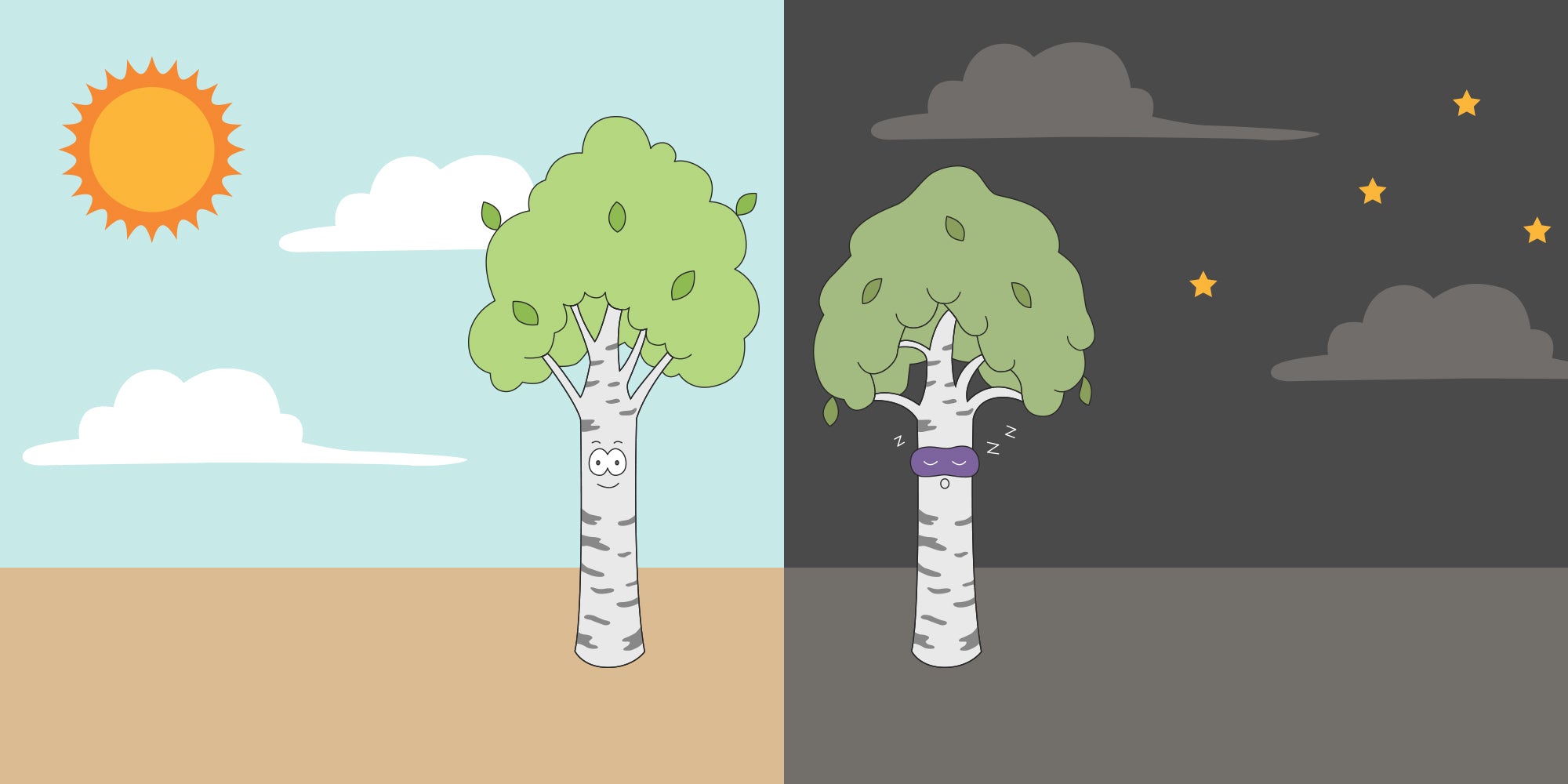Have you ever been camping in a silent forest, calmly looking at the stars and wondering if trees, like humans, do go to sleep?
No?
Well, some people did. In 2016, to be precise.
A very motivated group of scientists (led by Eetu Puttonen) from Austria, Finland, and Hungary teamed up and decided that they would spend some nights with their lasers scanners analyzing how trees behave during nighttime.
So one day, as the sun went down and the moon came up, covering the forest with its opalescent glow, the galvanized scientists finished setting up their lasers scanners and tents, ready to start their investigation.
And today, you are lucky enough to discover the results of their analysis and know if creepy cracking sounds in the forest may actually be tree snoring sounds or not.
So, do trees sleep or not?
It seems they do.
Our fellow scientists repeated their test twice (once in Finland and once in Austria), making sure each time, the conditions were pretty much the same. There was no wind or condensation, and it was close to solar Equinoxe.
Everything was in place, so they could be confident enough to obtain valid data.
And they found that not only do birch trees droop their branches on average by 10 centimeters during nighttime but that they also have a daily cycle with several different phases (like human beings). Following this circadian rhythm, the branches usually were returning to their original position within a few hours after the first light.
Pretty much the same cycle is followed with your hair, no? Don’t lie, you and we all know that we look like messed up gremlins when waking up.

If you wonder what physiological change makes the branches move, that we don’t know for sure. It might be caused by the fact that trees are dropping down the pressure of their internal fluids when the sun hides away and photosynthesis stops energizing them. Or, they might simply be resting, to keep the energy level as high as possible until the sun comes up again.
Well, those of you that are a little more critical might say ‘’Yes, trees are following a specific cycle, but do we know for sure that lowering their branches can be considered as ‘’sleeping?’’
Indeed, we don’t know for sure. Yet. And to be able to properly answer this question, we would need to answer much larger philosophical questions, like: ‘’what is sleep?’’, ‘’what does one body must be made of to be able to sleep?’’, or ‘’is real sleep only for mammals with big pinky brains? But those would be very different topics.
For the time being, it seems that trees are somewhat resting, and let’s say that this is close enough to call it sleeping.
Trees not only do sleep, but they also hibernate! (well, kind of)
In cold places, just before winter, trees prepare to ‘’fall’’ (bad pun intended) into a state called dormancy.
They repatriate chlorophyll and starch from the leaves, before releasing them to die on the floor (don’t be sad, those would’ve died anyway because of the cold; mother nature is merciless). The starch is converted to sugar, which will act as an antifreeze agent. Afterward, a dehydration process begins to ensure that trees will not shiver all winter (fewer liquids = less freezing opportunities, which is great).

This is the moment when trees are finally able to rest and feel protected. They will then wait until they can fully wake up again in the spring and generate buds.
When we think about it, a tree has sleeping habits that could be related to those of a bear, a groundhog or a hedgehog. Therefore they could be more similar to these animals than we first thought (minus the fluffiness and sharpened teeth).
But know that not all trees are following the same sleep cycle. In warmer places, trees naturally don’t hibernate, and it appears that some other tree species might be having trouble getting a good night’s sleep.
Trees having sleep disorders, can you imagine?
Well if trees can sleep, can they also dream?
To tell the truth, it’s hard to think that without having a proper brain (or something getting close to it), trees can be real dreamers.
They sleep, nap, hibernate, or have sleep problems in ‘’their own way’’.
But if they were dreaming, we’re sure that they would not dream of electric sheep or big harvesting vehicles. They would probably dream of a world with a lot more sunlight, water, and way fewer chainsaws.
Scientists are still planning to unveil the many secrets of trees’ nightly routine. So sooner or later, we should learn a lot more about this topic.
Until then, we wish you to sleep like a log (without any of those sleep disorders trees experiment)!
*During the whole month of December, we plant 5 trees for each mattress purchased. A way to give back to the planet during the holiday season, while offering yourself a better sleep! Discover Polysleep's commitments to the Planet.

If you liked our blog article, please don't forget to share it with your friends by clicking the button below










